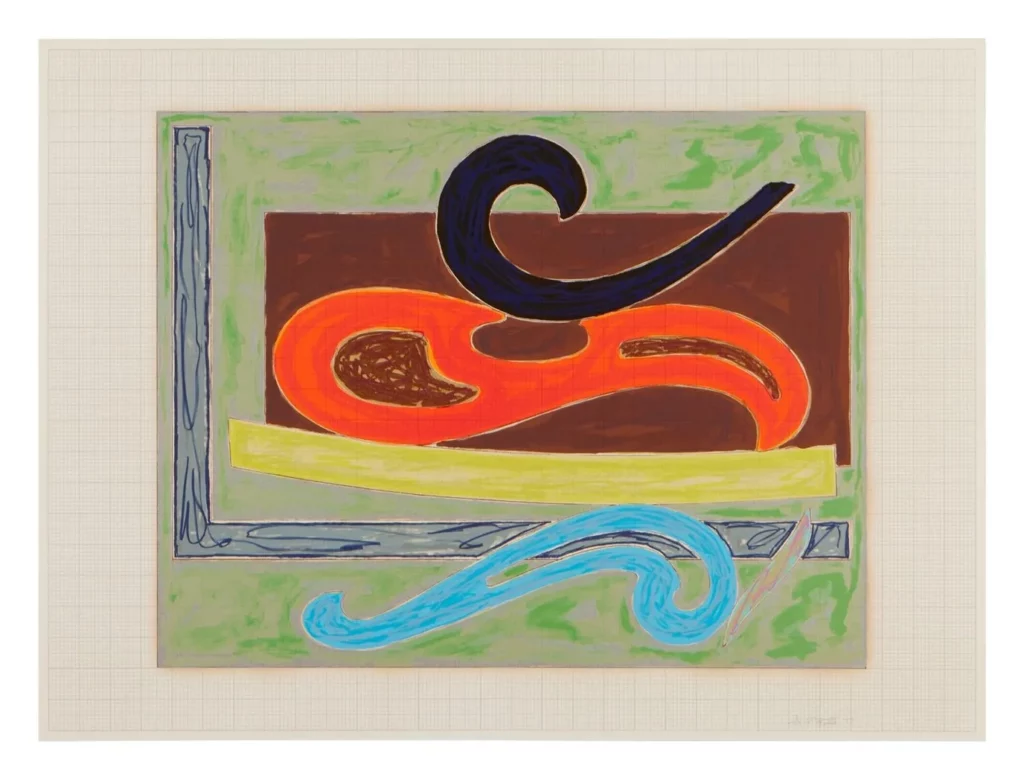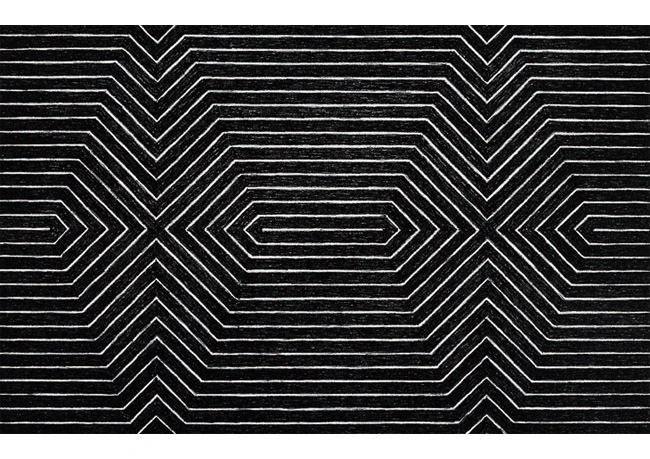Frank Stella, one of the leading lights of contemporary art, has made his unique and ground-breaking interpretations. Among the most intriguing and fine samples of his paintings is his popular black series which has amazed art lovers and critics. In this article, we will explore the life and career of Frank Stella, closely look at his Black Painting series, and discover all the distinctive elements that made this collection a landmark work of modern abstraction .
Who Was Frank Stella?

In addition to his own artistic pursuits, Stella deeply influenced the post-war American art scene. He turned to the field of painting at the Phillips Academy in Andover and later majored in history at Princeton University. Stella’s early paintings helped to popularize the abstract painting, questioning the standard artistic principles and notions. Along the way, Stella repeatedly exceeded the boundaries of artistic expression by trying out different processes and materials.
FUN FACT: Frank Stella had a cameo appearance in the 2001 film “Zoolander.” In the movie, Stella appears as himself, judging a fictional “walk-off” competition between the main characters, played by Ben Stiller and Owen Wilson.
His Career
Stella became renowned in the late 1950s and early 1960s for his “Black Paintings”, which were of dark, monochromatic canvases that show forms using geometric shapes. Such pieces denoted a shift from the subjective gesticulations of abstract expressionism to the norms of clarity, order, and structure.
In the year 1965, Stella’s style evolved which further led to his creation of “Protractor Series” and “Stripe Paintings.” These series explored his interest in color, shape, and spatial relations. Furthermore, they also served as the base for his exploration of three-dimensional forms during the coming years.
Throughout her over six decade long career, Stella continues to further her interests in experimentation and innovation. He has achieved various awards and laurels, the National Medal of Arts and the Presidential Medal of Freedom included, and became one of the most influential artists of the generation.
What is Happening in Black Painting?

| Artist | Frank Stella |
| Date Created | 1958-1960 |
| Medium | Enamel on canvas |
| Genre | Minimalism, Abstract Expressionism |
| Period | Mid-20th Century |
| Dimensions | Varies across paintings, typically large-scale canvases |
| Series/Versions | Black Painting series, consisting of multiple variations |
| Where is it housed? | The Black Paintings can be found in various private collections and museums around the world, including the Museum of Modern Art (MoMA) in New York. |
The Black Painting series, painted in 1958-1960, is a significant stage in Stella’s artistic career. This started a new style of art and it became the first of many exhibitions that explored minimalism. So, he became the pioneer of minimalism. The series is defined by a choice of black monochromatic canvases, without any major objects, leading the viewers to the direct personal experience of the form and colors.
As a result, Stella transitioned from abstract expressionism, which was characterized by free-flowing gestural brushstrokes, to a more precise and organized technique. The Black Paintings are a truth of his simplicity in reducing painting to its elemental components. These canvases of black color compel viewers to consider what they already know about the very nature of the artistic process, along with the space of forms and colors.
Interesting Facts about the Black Painting
Monochromatic Exploration: The Black Painting series is celebrated for its monochromatic approach, but it is not entirely black. Stella introduced subtle variations in tone and texture within the black color, adding depth and complexity to the seemingly simple compositions.
Influence of Jasper Johns: Stella’s engagement with the Black Painting series was influenced by his contemporaries, including Jasper Johns. The starkness and simplicity of Johns’ work encouraged Stella to explore new avenues in abstract art, leading to the creation of the Black Paintings.
Challenging Conventions: The Black Painting series stands out by challenging the conventions of artistic approach. Through the deprivation of objects identifiable as a subject and the preference for the power of color and form, Stella went beyond the definition of what, in the past, had been viewed as painting and pulled the viewers into the process of rethinking the essence of art.
Artwork Spotlight: Eskimo Curlew

“Eskimo Curlew” is indeed a prominent artwork by Frank Stella which is part of his famous “Protractor Series”. The artwork was produced in 1967 and features Stella’s command of geometric forms and vivid colors, enticing the viewer to discover the effect of shape and space in modern art.
Frequently Asked Questions
What was Frank Stella’s philosophy?
It was this non-representational mindset that set Stella apart from previous approaches—she is credited with saying, “What you see is what you see.” The artwork is the object and makes no references to anything else in Frank Stella’s mind.
What is Frank Stella known for?
American artist Frank Stella, who was born in 1936 in Massachusetts, is most recognized for his minimalist works. A movement known as minimalist art emerged in the 1950s when a group of artists refused to base their paintings and sculptures on real-world objects such as houses, bottles, or wintry landscapes.
Conclusion
Frank Stella’s Black Painting series is argued to be a milestone in the development of modern art. Through his act of stripping down the extraneous and embracing the simplicity of the black color, Stella challenged us to take on the very basics of art, that is to explore with forms and colors. The table summarizes the essential elements of the Black Painting series, whereas the analysis of Stella’s career and the monumentality of the paintings convey their timeless value today.













